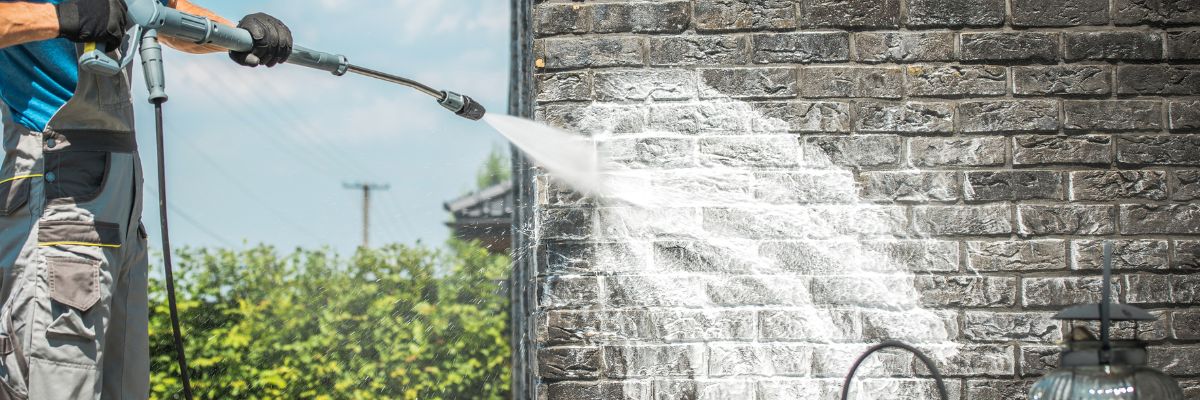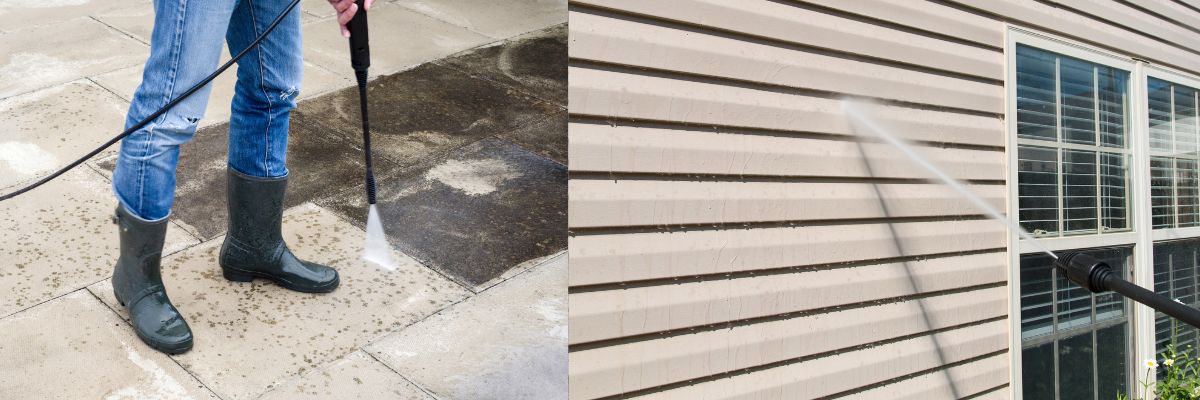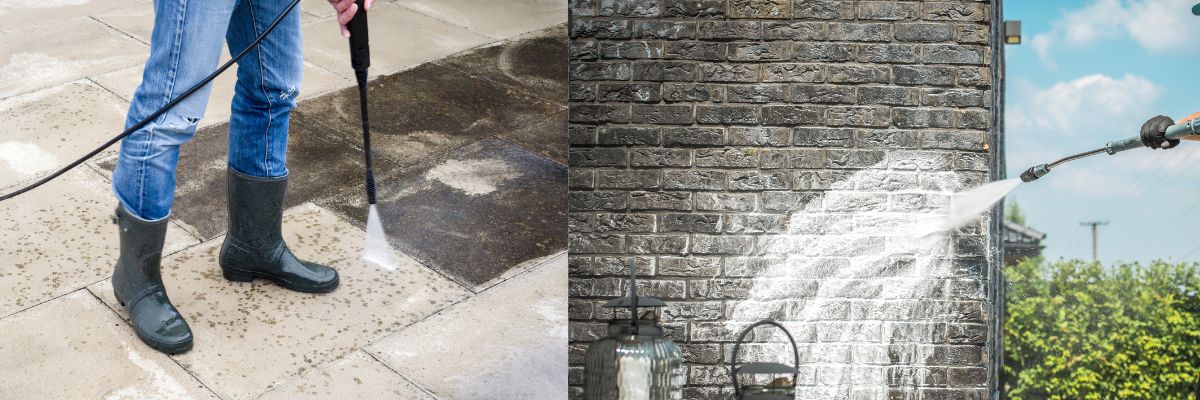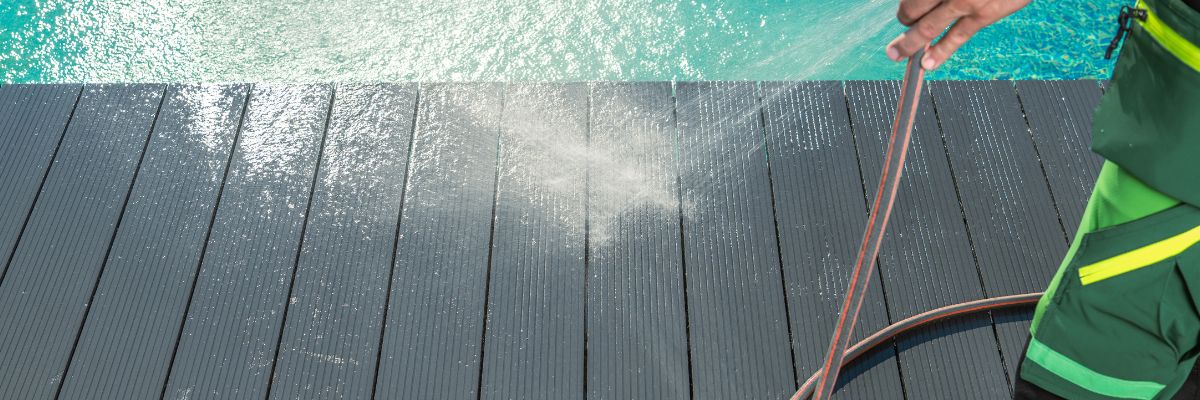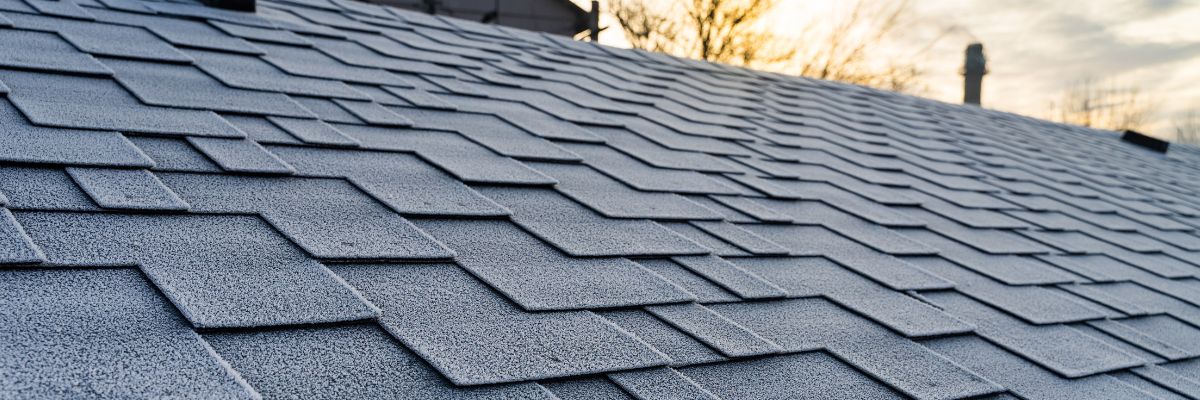Yes, you can pressure wash composite decking, but only if it’s done carefully. For best practice maintain a pressure under 1,500 psi, use a fan-tip nozzle and ensure that the nozzle is at least 8-12 inches away from the decking.
Done incorrectly, pressure washing can cause irreversible damage to the surface of your deck, including etching, surface breakdown, and even mold infiltration.
Understanding the right approach is crucial to pressure washing your composite deck looking its best without compromising its structure.

Tips For Safely Pressure Washing Composite Decking
One of the most important rules when pressure washing composite decking is to keep the pressure within safe limits.
Many manufacturers recommend never exceeding 1,500 PSI. Some high-performance brands allow pressure as high as 3,100 PSI, but only under very specific conditions. Even best in class Trex composite decking recommends no pressure above 2,500 psi. Always check your decking manufacturer’s guidelines before starting.
Using a pressure washer with a fan-tip nozzle—preferably at a 40° angle—is essential. This helps disperse the pressure more evenly, reducing the risk of concentrated water damage. The goal is to gently rinse the surface, not blast it clean with brute force.
Maintain Proper Technique
Even with low pressure, poor technique can still cause damage. Hold the nozzle at least 8 to 12 inches away from the surface of the deck. Moving too close can leave visible marks or grooves in the material, which not only look unattractive but can also trap dirt and moisture.
Always wash with the grain of the decking boards. This prevents the high-pressure water from cutting across the composite surface in a way that creates abrasions or uneven texture. Moving in the direction of the grain ensures that any debris is washed out naturally without disturbing the structural finish.
Why Soft Washing Is A Better Option For Composite Decking
Soft washing is one of the safest and most efficient ways to clean composite decking. Instead of relying on pressure, this method uses low-pressure water combined with cleaning agents that break down grime, mildew, and algae.
A typical soft wash solution might include a 1% bleach-to-water ratio or a combination of vinegar and water. These solutions are strong enough to kill mold and mildew but gentle enough not to damage the deck surface. After applying the solution, allow it to sit for a few minutes before rinsing it off with a low-pressure hose.
Manual Cleaning for Routine Maintenance
For everyday cleaning or light buildup, pressure washing isn’t necessary at all. A garden hose, soft-bristle brush, and mild soap can go a long way in removing dirt, pollen, and surface stains. This method is especially effective for decks that receive regular upkeep.
Spot cleaning can also be done using a diluted vinegar solution or a commercial composite deck cleaner. Scrubbing gently along the grain helps maintain the deck’s texture and finish without introducing unnecessary wear and tear.
Risks of Improper Pressure Washing
Granule Loss and Surface Degradation
Many composite decking boards feature a protective cap or outer layer designed to resist UV rays, stains, and physical wear. When pressure washing is done incorrectly, it can strip away this protective layer, exposing the underlying material to the elements.
This results in a chalky or faded appearance and may lead to accelerated UV degradation. The deck may also become more susceptible to scratches, stains, and moisture damage over time. Once the outer coating is compromised, the original finish can’t be restored without professional resurfacing or replacement.
Voiding the Manufacturer’s Warranty
Most composite decking comes with a manufacturer’s warranty covering issues like premature fading, warping, or structural failure. However, many manufacturers explicitly prohibit pressure washing or warn that it must be done only under specific guidelines.
Using a pressure washer outside of those approved specifications could void your warranty, leaving you financially responsible for any repairs or replacements. That’s why it’s essential to read the care instructions that came with your decking product before you begin any cleaning routine.
Mold and Mildew Infiltration
One of the lesser-known risks of improper pressure washing is surface etching, which creates small grooves or pits in the decking. These imperfections trap moisture and organic material, providing a perfect breeding ground for mold, algae, and mildew.
Over time, these stains can become deeply embedded in the decking and harder to remove. In some cases, the damage may become permanent, affecting both the appearance and safety of the deck, especially when it becomes slippery underfoot.
When and How to Pressure Wash Safely
Only Use Pressure Washing as a Last Resort
If your composite deck has significant buildup that can’t be removed by soft washing or manual scrubbing, you may consider pressure washing as a last resort. But remember—it should be done with caution.
Start by testing the washer on a hidden or inconspicuous area of the deck. This gives you a sense of how the material responds and allows you to fine-tune your settings before moving to visible sections. Use the lowest pressure setting that still allows for effective cleaning and maintain a safe distance from the deck surface.
Better Yet—Leave It to the Pros
Because of all the variables involved—PSI levels, nozzle types, grain direction, chemical compatibility—many homeowners choose to hire professionals for composite deck cleaning. Experts have the experience, equipment, and knowledge to clean your deck safely and effectively.
Professional services often include soft washing and eco-friendly solutions that are tailored to your specific decking brand. They also understand how to avoid warranty violations, prevent surface damage, and remove tough stains without compromising the integrity of the material.
Bottom Line: Pressure Wash With Caution—or Not at All
Composite decking is designed to be a low-maintenance, long-lasting surface—but that doesn’t mean it’s indestructible. While pressure washing can be used on composite materials, it must be done with extreme care to avoid permanent damage. High-pressure water can strip away the deck’s protective coating, void manufacturer warranties, and even leave the surface etched—creating places where moisture and mold can take hold.
If you plan to pressure wash your composite deck, remember these key tips:
- Never exceed 1,500 PSI unless your decking brand specifically allows for higher pressure.
- Use a fan-tip nozzle with a 40° spray angle to evenly distribute the water and reduce direct impact.
- Keep the nozzle at least 8–12 inches from the surface and always spray with the grain of the decking boards to avoid abrasion.
- Test a small, hidden area first to make sure the pressure and technique won’t damage your deck.
In most cases, safer alternatives like soft washing—using low pressure and a gentle cleaning solution—are just as effective. A mixture of 1% bleach or diluted vinegar works well for killing mold and mildew. For regular upkeep, a garden hose, soft brush, and mild soap can go a long way in maintaining your deck’s appearance without any risk of damage.
When in doubt, consult your manufacturer’s cleaning guidelines—or skip the guesswork and let the pros handle it. Vesta Pro Wash specializes in composite deck cleaning using safe, effective soft washing techniques that preserve your deck’s finish and extend its life. Our team understands the unique needs of composite materials and uses only manufacturer-approved methods to get the job done right.
Call Vesta Pro Wash today to schedule your composite deck cleaning and protect your investment the smart way.



